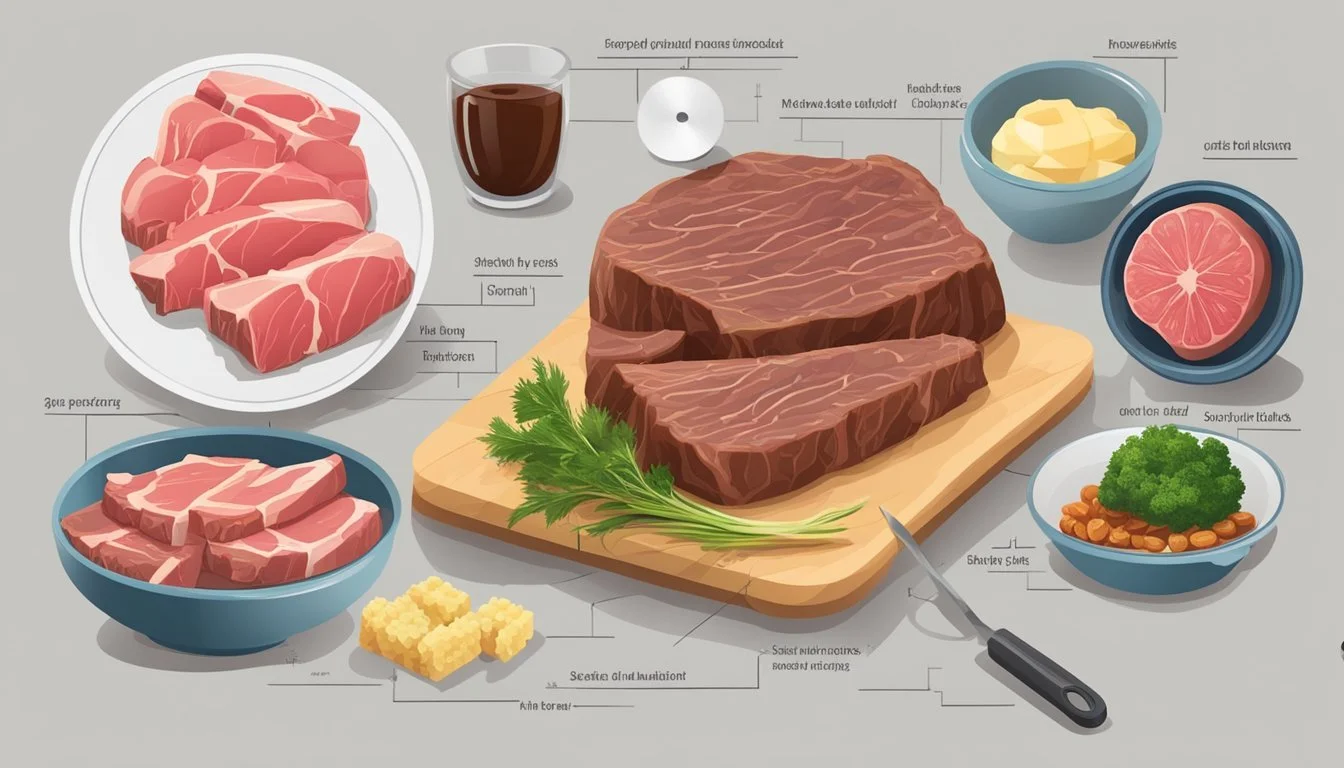Watching what you eat is one of the most important things you can do to prevent heart disease and stroke. Your dietary choices influence your cholesterol levels, blood pressure, and blood sugar levels, all of which can significantly impact your heart health. Moreover, what you eat directly affects your weight, which is also crucial in maintaining overall health. Here, we present ten actionable tips for a healthy diet, drawing inspiration from the Mediterranean way of eating, which is renowned for its heart-healthy benefits.
Understanding the Mediterranean Diet.
The Mediterranean diet emphasizes a balanced intake of foods, rich in nutrients while low in unhealthy fats, sugars, and processed items. This eating style is built around various food groups, including fruits, vegetables, whole grains, olive oil, fish, and lean proteins. Key aspects include:
- Rich in Nutrients: The diet is packed with vitamins, minerals, and antioxidants.
- Healthy Fats: Focuses on unsaturated fats from sources like olive oil and nuts, which can help lower bad cholesterol levels.
- Emphasis on Plant-Based Foods: Fruits, vegetables, legumes, and whole grains are staples.
- Social Aspect: Meals are often enjoyed with family and friends, which contributes to a positive dining experience.
By following these guidelines, you can not only support your heart health but also enhance your overall well-being. Here are the ten tips you can incorporate into your daily routine.
1. Stick to Regular Meals.

Aim for three balanced meals a day—breakfast, lunch, and dinner.
Having structured meal times helps regulate hunger hormones and maintain steady energy levels throughout the day. Skipping meals can lead to excessive hunger later, often resulting in overeating. Aim for a balance of protein, healthy fats, and carbohydrates at each meal.
Example: For breakfast, consider oatmeal topped with fresh berries and nuts. For lunch, a salad with leafy greens, grilled chicken, and a drizzle of olive oil can be satisfying. For dinner, a well-portioned plate of grilled fish, steamed broccoli, and quinoa can create a balanced meal.
2. Control Portion Sizes.

Use a standard 9-inch plate and fill half of it with vegetables at dinner.
Portion control is crucial for managing calorie intake and preventing weight gain. Research shows that larger plates often lead to larger portions. By visually controlling your portions, you can maintain a healthy weight.
Example: When serving dinner, fill half your plate with colorful, non-starchy vegetables, such as spinach, carrots, or zucchini. Allocate one quarter of your plate for a lean protein source, such as chicken or legumes, and the final quarter for whole grains like brown rice or whole-grain pasta.
3. Increase Fruit and Vegetable Intake.
:max_bytes(150000):strip_icc()/101323-Fruits-and-Vegetables-e0571b7c7a4346f598ed74d93b664859.jpg)
Incorporate more fruits and vegetables into your diet.
Fruits and vegetables are high in fiber, vitamins, and minerals, which are vital for good health. Keeping them readily available can encourage healthier snacking and meal preparation.
Example: Prepare a fruit bowl to keep on your kitchen counter or pack baby carrots and apple slices in your bag for on-the-go snacks. Aim for at least five servings of fruits and vegetables daily. This can include salads, smoothies, stir-fries, and soups.
4. Limit Red Meat Consumption.

Try to limit red meat to a maximum of three times a week.
Red meat can be higher in saturated fats, which may contribute to heart disease when consumed in excess. Instead of relying on red meat for protein, explore alternative sources.
Example: Substitute red meat with lean poultry, fish, beans, or lentils. For instance, a turkey burger or a bean chili can be a delicious alternative to a beef patty. This not only helps reduce saturated fat intake but also introduces variety into your meals.
5. Increase Fish Intake.

Aim to eat fish, especially oily varieties like salmon, mackerel, trout, and sardines, at least twice a week.
Fish is an excellent source of omega-3 fatty acids, which are known to lower the risk of heart disease. They can help reduce inflammation and improve heart health.
Example: Consider grilling salmon for dinner, adding it to a salad or serving it with roasted vegetables. Canned sardines can also be a convenient and cost-effective option—add them to whole-grain crackers or salads.
6. Choose Low-Fat Dairy Options.

Opt for low-fat dairy products, and limit cheese intake to no more than two matchbox-sized portions per week.
Dairy can be a great source of calcium and protein, but full-fat versions can also contain high levels of saturated fat. By choosing low-fat options, you can enjoy dairy while minimizing unhealthy fat intake.
Example: Use low-fat yogurt as a base for smoothies or in recipes instead of sour cream. When cooking, opt for low-fat milk instead of cream, and be mindful of your cheese portions in dishes.
7. Reduce Salt Intake.

Limit the use of salt in cooking and avoid adding it at the table.
High salt intake can lead to increased blood pressure, a significant risk factor for heart disease and stroke. Instead, use herbs and spices to enhance the flavor of your meals.
Example: Experiment with garlic, ginger, basil, or cumin in your cooking. Not only do these ingredients provide flavor, but they also contribute additional health benefits.
8. Cut Down on Added Sugars.

Avoid adding sugar to your foods and beverages.
Excess sugar intake is linked to various health issues, including obesity, type 2 diabetes, and heart disease. Being mindful of sugar content in processed foods is essential.
Example: Choose unsweetened beverages, like water or herbal tea, instead of sugary sodas or juices. For sweetening your meals, consider natural alternatives like honey or maple syrup, but use them sparingly.
9. Monitor Alcohol Consumption.

Limit alcohol intake and aim for at least two alcohol-free days each week.
Moderate alcohol consumption can be part of a healthy diet, but excessive intake can lead to various health issues, including heart disease.
Example: If you enjoy wine, consider limiting it to one glass during meals. Explore alcohol-free alternatives like sparkling water with lime or herbal teas on your alcohol-free days.
10. Stay Hydrated.

Drink plenty of water throughout the day.
Staying hydrated is crucial for overall health and can help manage appetite. Sometimes, our bodies confuse thirst with hunger, leading to unnecessary snacking.
Example: Aim for at least eight 8-ounce glasses of water daily. Keep a refillable water bottle with you, and consider adding slices of fruit or herbs for flavor.
Conclusion
Incorporating these tips into your daily routine can significantly contribute to a healthier lifestyle. A balanced diet rich in nutrients and low in unhealthy fats and sugars supports heart health and enhances overall well-being.
Remember that the key to long-term success lies in moderation and variety. Adopting a Mediterranean-style eating pattern, with its emphasis on whole foods and healthy fats, can protect your heart and promote better health for you and your family. By making small, sustainable changes to your diet, you can enjoy a more fulfilling and healthier life.












Comments (0)